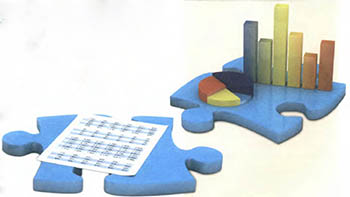A New Framework for Estate Planning

With the passage of the American Taxpayer Relief Act of 2012, the federal estate-tax rules changed dramatically, virtually eliminating federal estate taxes for most people. These changes present new opportunities for taxpayers, allowing them to reduce their beneficiaries' income taxes by carefully choosing which assets to include in their estates.

Background
Under the new rules, the federal estatetax exclusion is currently $5,430,000. Married couples can elect to make this exclusion "portable," meaning that a surviving spouse may combine any part of the predeceasing spouse's unused exclusion with his or her own, potentially doubling the exclusion amowlt.* Therefore, i 2015, a married couple potentially may exclude up to $10,860,000 from federal estate taxes.
Stepped-up Basis
Given this generous exclusion, taxpayers may want to take a second look at another tax rule that allows for a "stepped-up basis" for assets included in the estate. Generally, "basis" equals cost plus improvements less any depreciation deductions. Basis is significant because it is the nontaxable floor above which any capital gains are taxed.** A step-up in basis to an asset's appreciated value at death allows the beneficiary to reduce his or her capital gains from a later sale.
Compare this rule to the one that applies to gifts, which is that, generally, the person receiving the gift takes the donor's basis. Given the difference in the tax treatment between lifetime gifts and those passed through an estate, the preferred tax strategy is generally to keep the asset in the estate if no estate-tax liability is anticipated.
Example. Thrrty years ago, Jane purchased shares of stock for $25,000. Today, the shares are worth $200,000. If Jane makes a lifetime gift of the shares to her son, he will take his mother's basis of $25,000 and face a potential $175,000 capital gain from a sale. Alternatively, if Jane keeps the shares in her estate, her son will take the stepped-up basis equal to the shares' fair market value on the date of death, and any future gains will be measured from that higher value.
Families will want to carefully choose which assets to keep in an estate. Good candidates for inclusion will be lowbasis, high-value assets such as longterm investments in taxable accounts, as well as residences and vacation homes. However, the specific facts in each case must be examined carefully to determine the best course of action.
Retirement Benefits
A large source of embedded income-tax liability in estate assets is retirement accounts, whether they're held in 401(k) or other employer plans or are individual retirement accounts. Such accounts typically consist entirely of pretax or deductible contributions plus taxdeferred earnings, and the estate-tax rules provide that the step-up rules do not apply. Instead, inherited retirement benefits constitute "income in respect of a decedent" and will create ordinary income-tax liability for either the estate or the beneficiaries.
Because taxable retirement account distributions are subject to ordinary tax rates which may be as high as 39.6% - the preferred strategy may be for the owner to draw down his or her retirement assets before those to which the stepped-up basis rules apply. If the retirement account will not be entirely spent down, the owner should properly designate the beneficiaries to allow them the best opportunities for tax deferral. •

NOVEMBER 10 Employers: Deferred due date for Form 941. if timely deposits were made.
DECEMBER 15 Corporations: Pay fourth installment of 2015 estimated tax.
JANUARY 15 Individuals: Pay last installment of 2015 estimated tax with ForniT040:'fS. Or file 2015 income-tax return and make full payment of any balance due by February 1. 2016.
FEBRUARY 1 Employers: Distribute copies of Form W-2 for 2015 to employees.
1 Businesses: Distribute Forms 1099 (or other information statements) to recipients of certain payments made in 2015. See us for more details.
1 Employers: File Form 941, Employer's Quarterly Federal Tax Return; quarterly deposit due.
1 Employers: File Form 940, Employer's Annual Federal Unemployment (FUTA) Tax Return, for 2015.
* Generally, the executor for the predeceased spouse must make the elect.ion on a timely filed federal estate-tax return. ** Long-term capital gains (on assets held over one year) are taxed at a 15% rate for most taxpayers and a 20% rate for those in the highest regular bracket.
2015 Nov Pg 03


